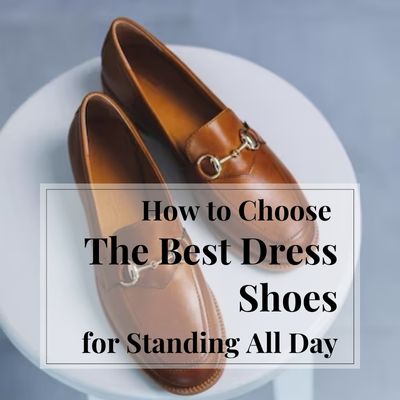Many people make the mistake of wearing dress shoes that are not meant for extended periods of standing. Wearing the wrong shoes can cause a multitude of problems such as bunions, calluses, and ingrown toenails. Not to mention, it’s just plain uncomfortable.
Over the past few years, there has been an increasing focus on the importance of comfort in dress shoes. As more and more people spend their days standing or walking, the need for shoes that can provide support and cushion has become a top priority.
However, not all shoes are created equal. Therefore, it becomes difficult to choose the right dress shoe for standing all day. So, to help you out if we have put together a guide on some factors to consider when choosing the best dress shoes for standing all day.
So without further ado, let’s get started!
Factors to Consider When Choosing Dress Shoes for Standing All Day
When choosing the best dress shoes for standing all day, you need to consider the following factors.
Shoe Material
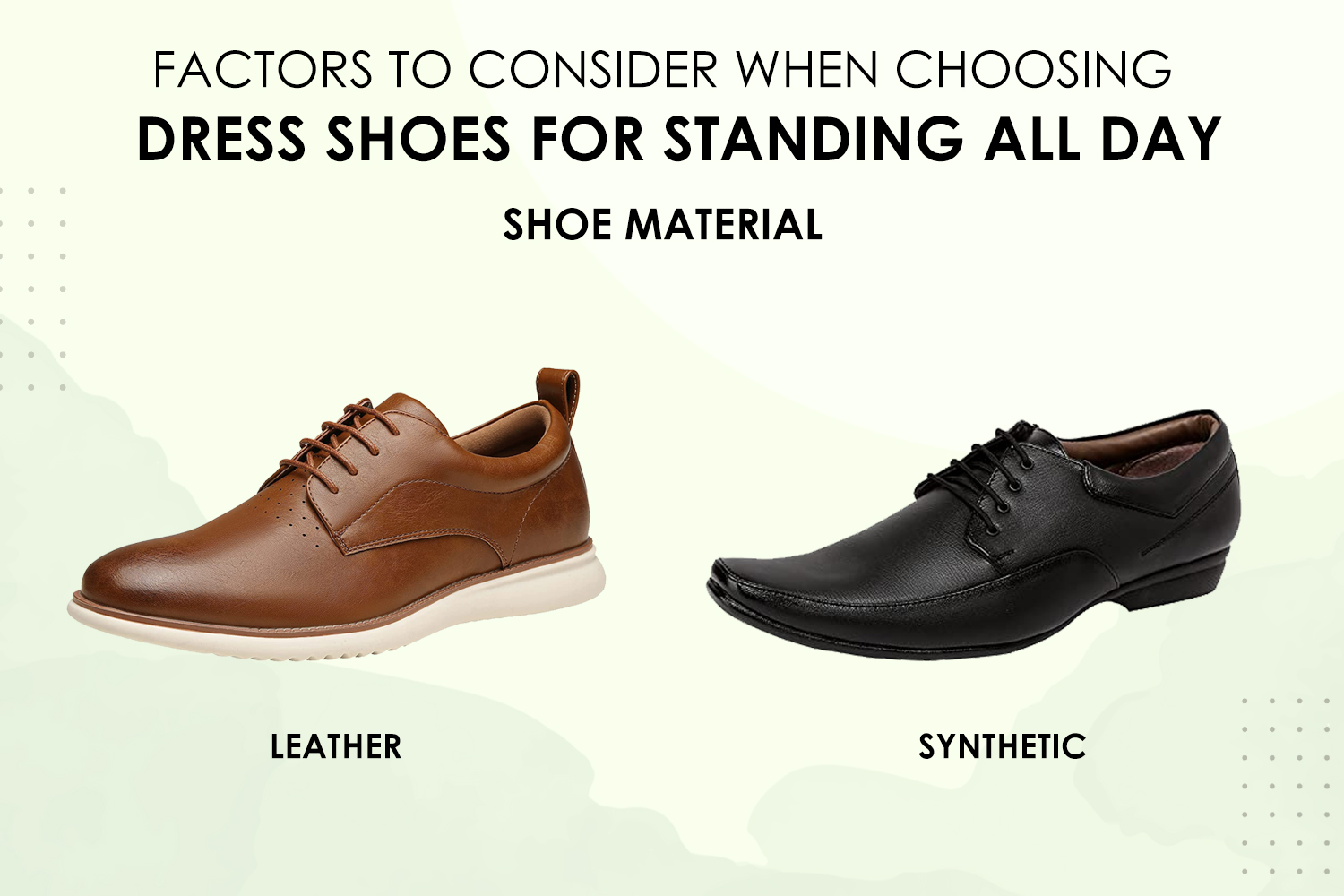
The material of the shoe is important because it will determine how breathable the shoe is. You want a material that will allow your feet to breathe and won’t make them sweat.
Leather is often the best choice for dress shoes because it’s breathable and stylish. Synthetic materials are an excellent budget-friendly option but might not be as breathable.
Shoe Construction
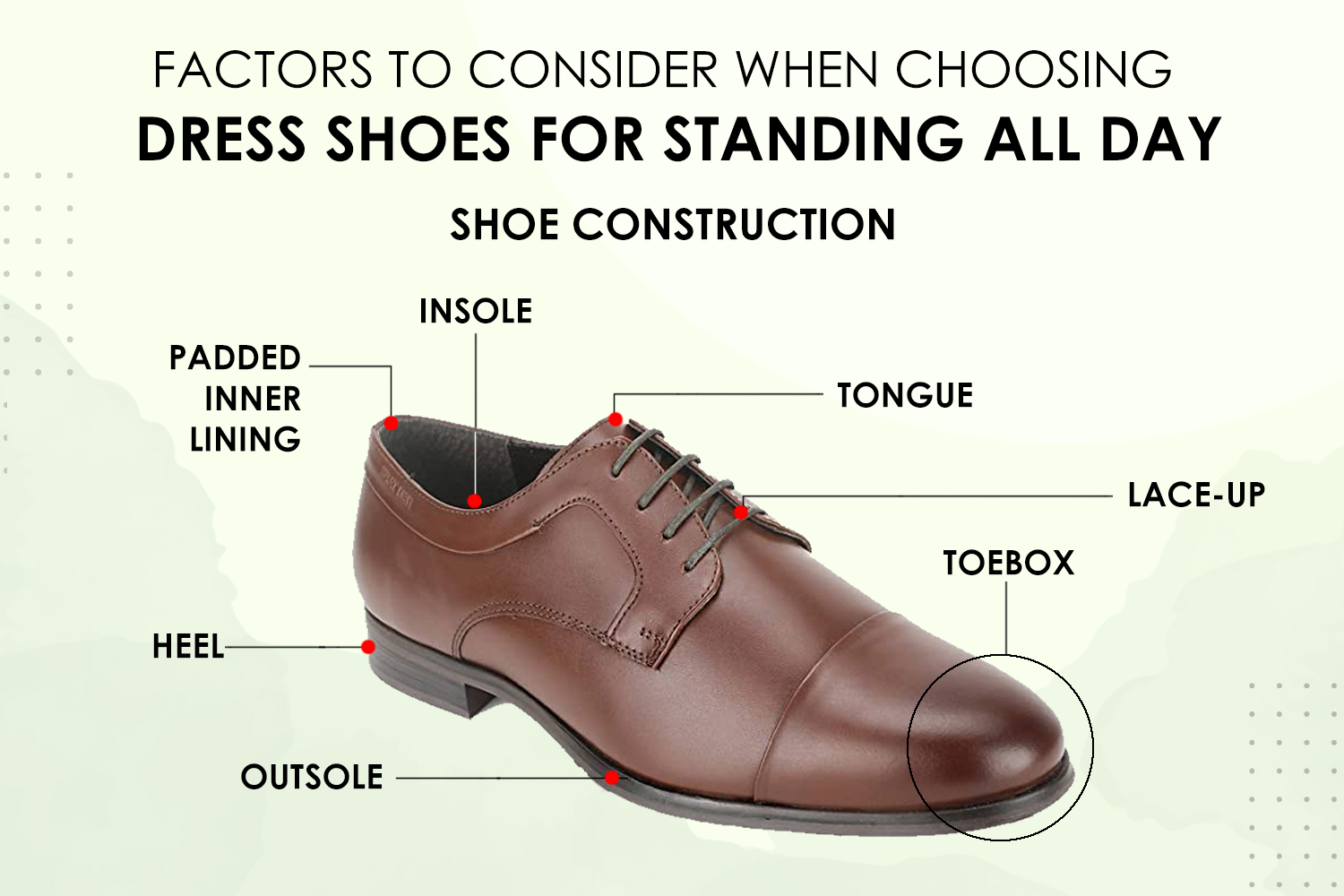
Shoe construction is significant because it determines how the shoe is put together. A well-constructed shoe will be more durable and will last longer. It will also determine how flexible and comfortable the shoe is.
Cushioning
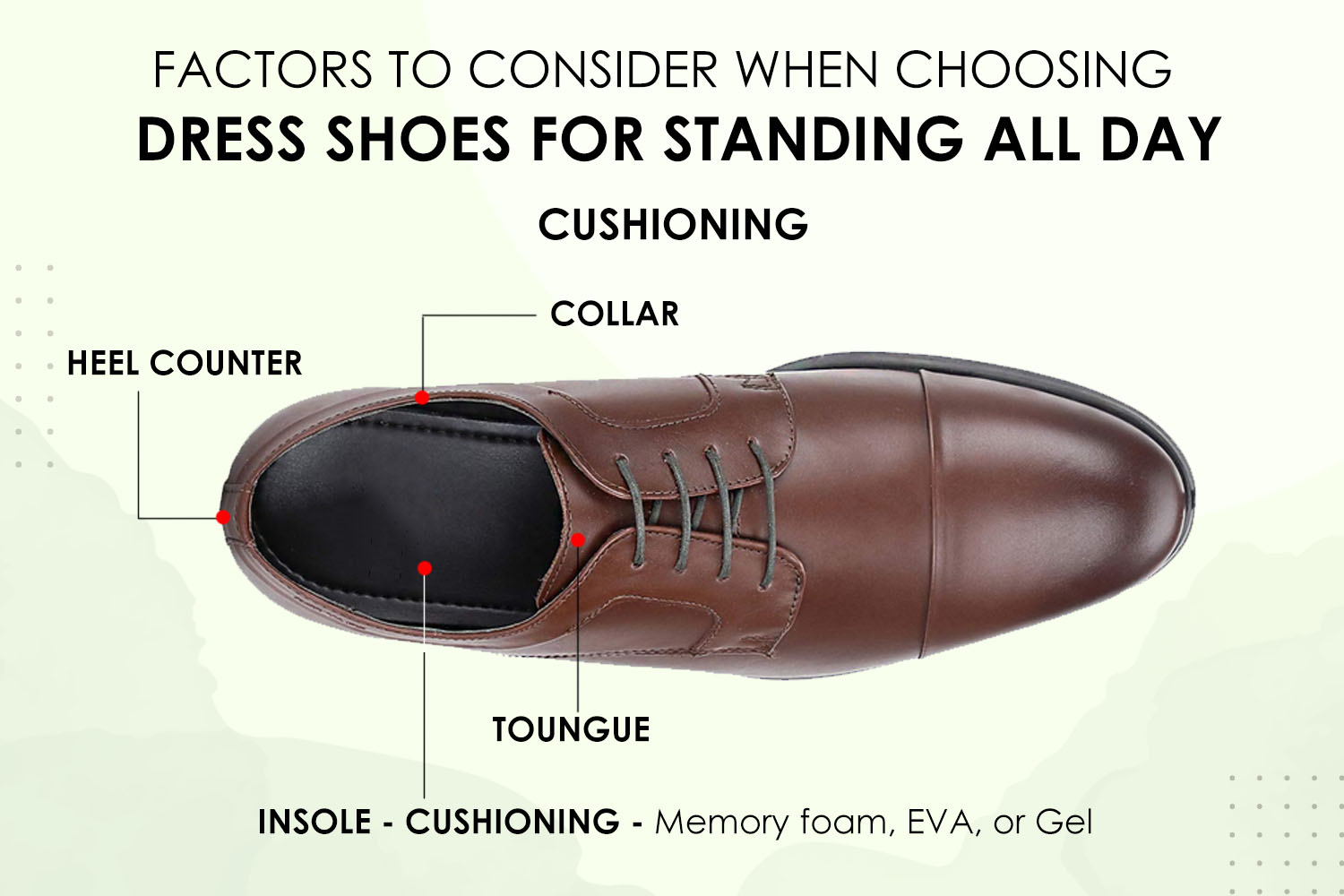
Cushioning is one of the most important factors to consider when choosing a dress shoe. Properly cushioned shoes reduce the stress on your feet, resulting in less pain and increased comfort.
Look for shoes with a high-quality insole made of memory foam, EVA, or gel. Also, check if the shoes have extra cushioning in the heel and ball of the foot area. Extra padding on the heel counter, tongue, and collar will also add to the shoe’s overall comfort.
Shock Absorption
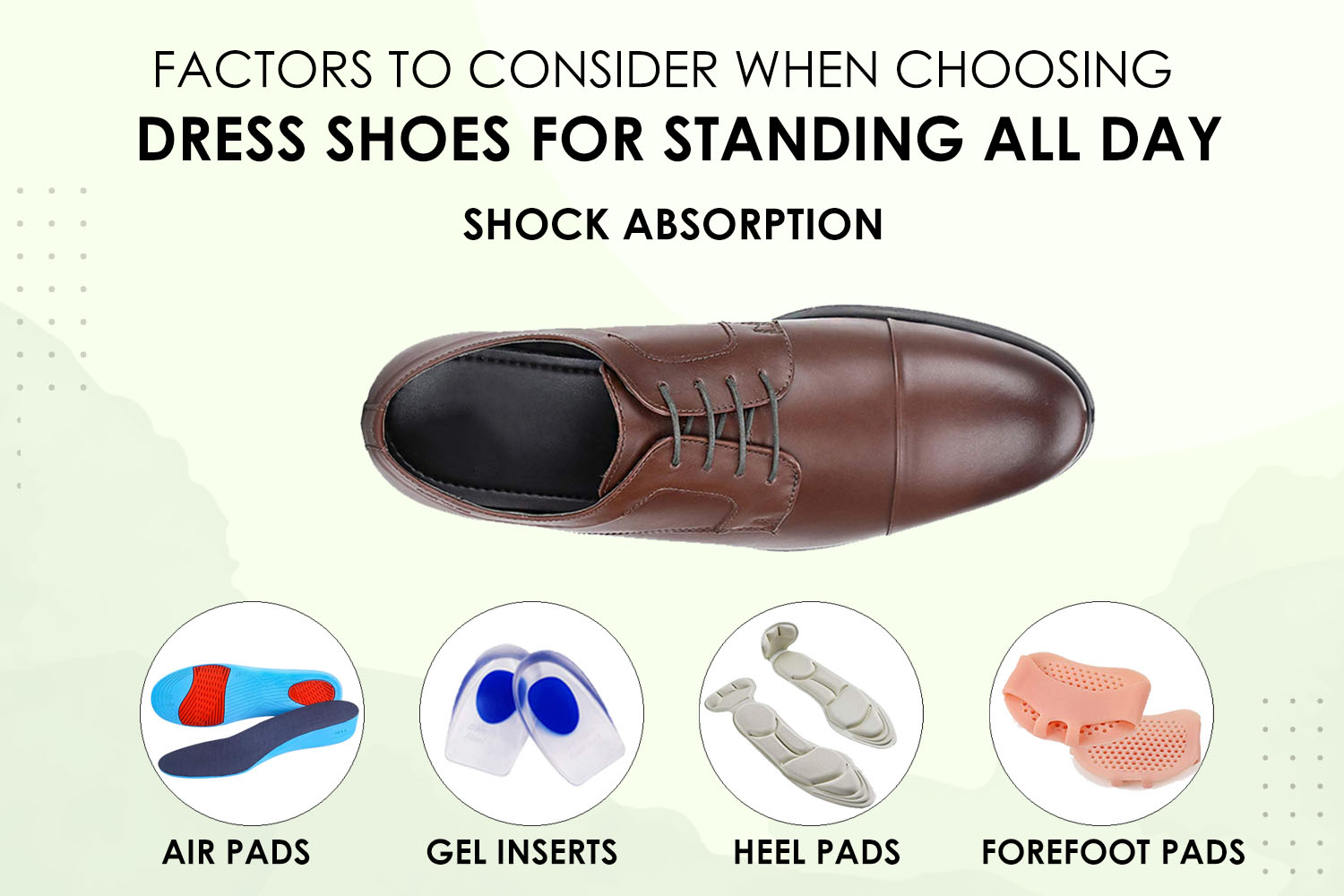
Shock absorption and cushioning work together to reduce the impact of each step while also providing an excellent energy return. This can make for a more comfortable experience, which means less fatigue.
When looking for shock-absorbing shoes, seek ones with unique features like air pods or gel inserts. Furthermore, some brands use specialized shock-absorbing technologies, such as heel and forefoot padding, to provide the best shock absorption.
Shock absorption is an important factor to consider if you intend to wear dress shoes on hard surfaces such as concrete floors. Here is a list of the 31 best shoes for standing on concrete all day that might interest you.
Midsole
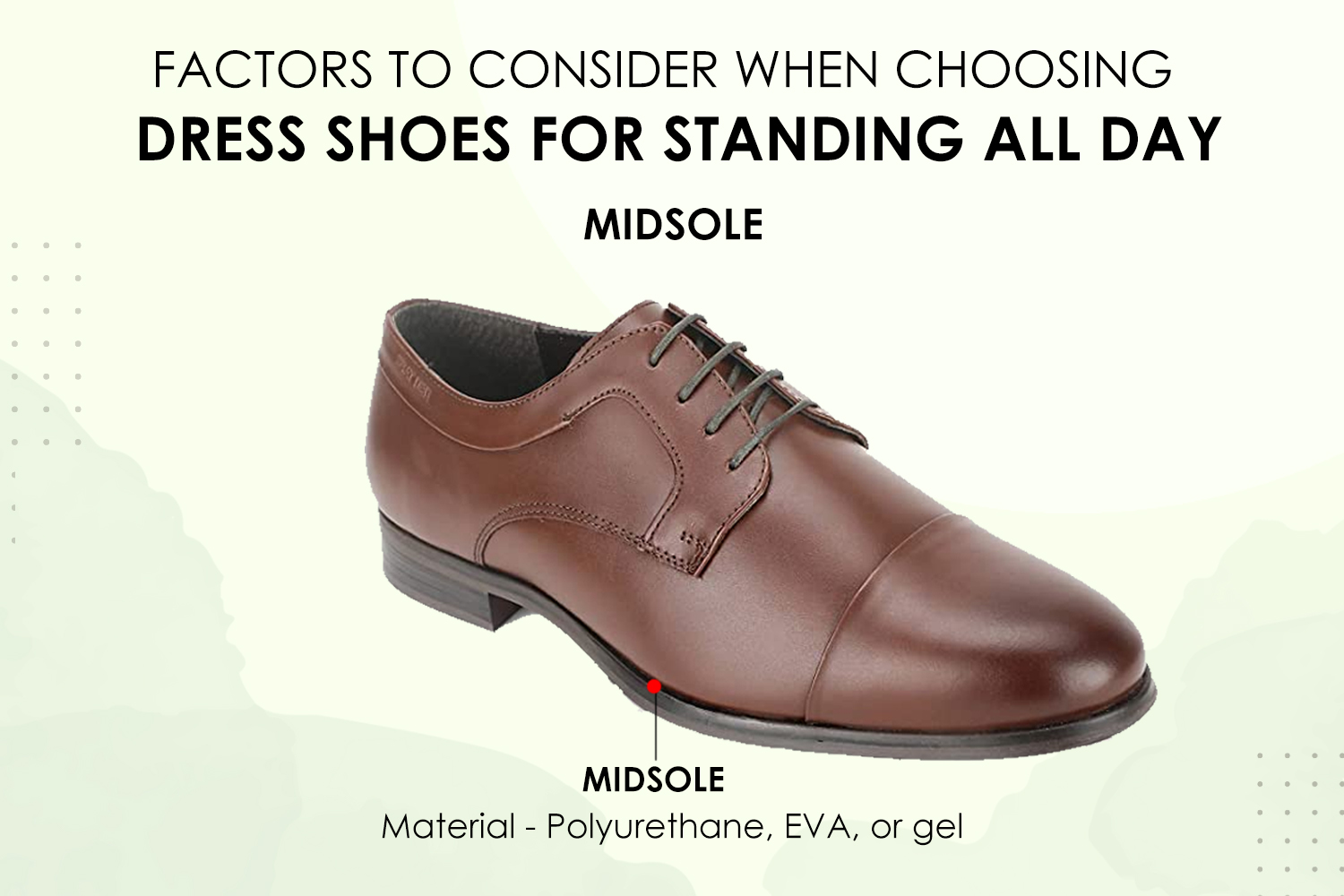
The midsole is the layer between the outsole and insole of the shoe. It’s responsible for providing additional cushioning and shock absorption.
Look for shoes with a midsole made of polyurethane, EVA, or gel. These materials are lightweight and provide good cushioning. Also, they should be resistant to compression so that they don’t lose their shape over time.
Arch Support
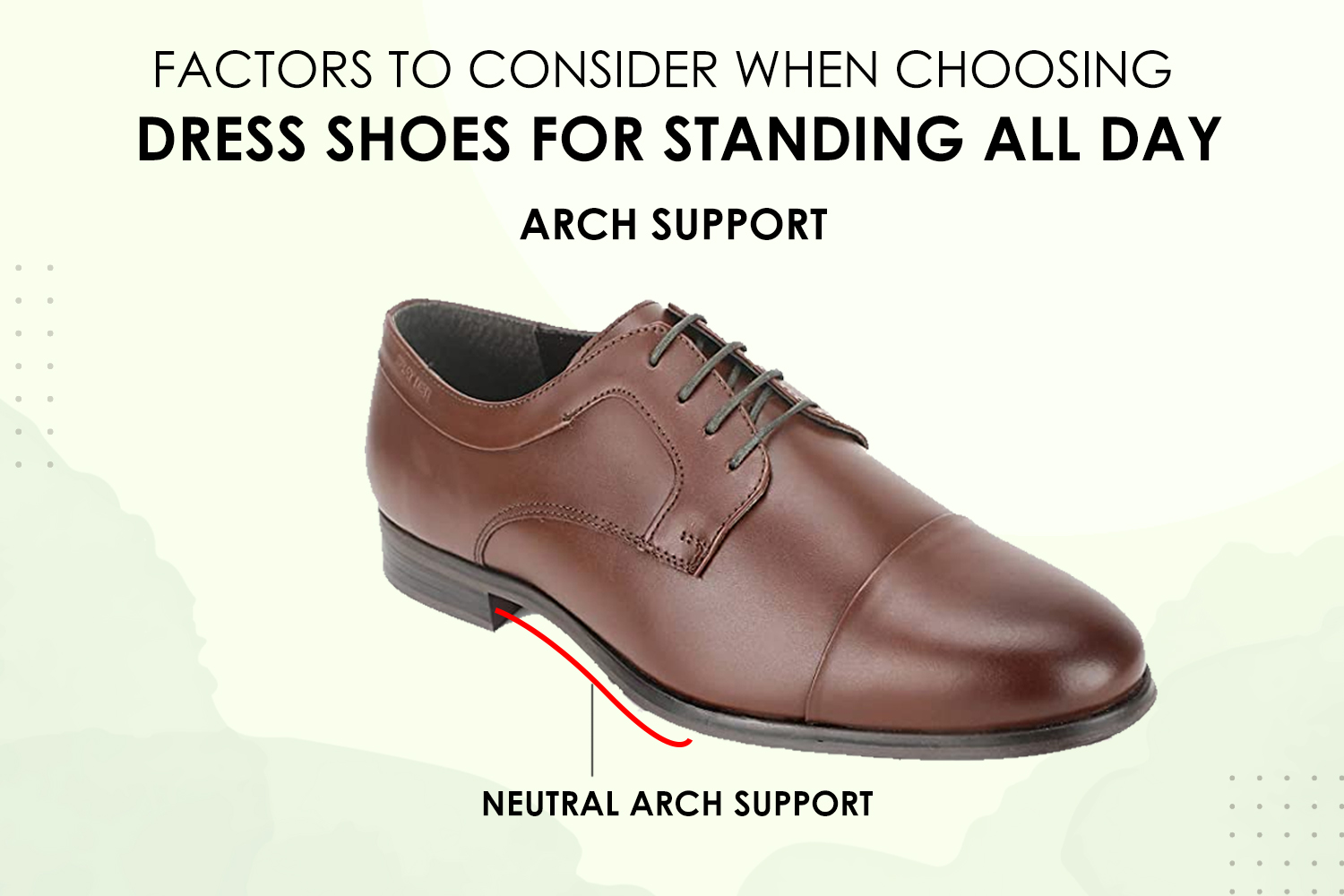
If you have flat feet or high arches, you’ll need to pay special attention to the arch support of your shoes. Wearing shoes with inadequate arch support can lead to pain in the balls of your feet, heels, and even your lower back.
Dress shoes with good arch support help distribute your body weight evenly and minimize the stress on your feet. Moreover, good arch support will prevent your feet from rolling inward (overpronation) or outward (supination).
Removable Insole
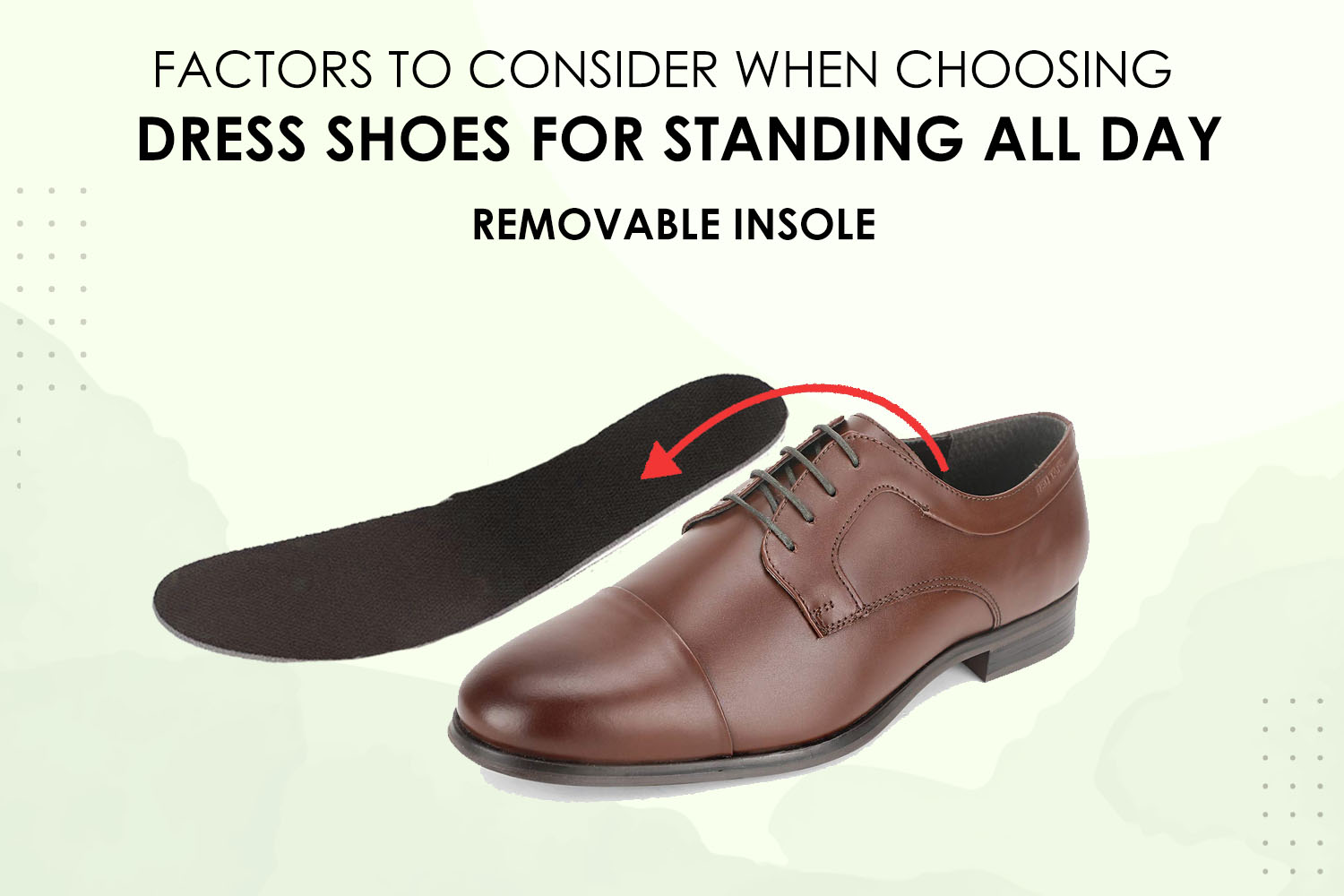
While removable insoles aren’t mandatory, they are a convenient feature to have. They allow you to replace the insole with one that delivers more or less cushioning based on your preferences.
Moreover, removable insoles make it easy to clean the shoes and keep them smelling fresh. To ensure a hassle-free cleaning process, follow our easy step-by-step guide on how to clean shoe insoles.
On the other hand, Removable insoles will help individuals suffering from plantar fasciitis, flat feet, and other foot problems. It will allow you to replace the standard insole with a more supportive medical one.
Ankle Grip
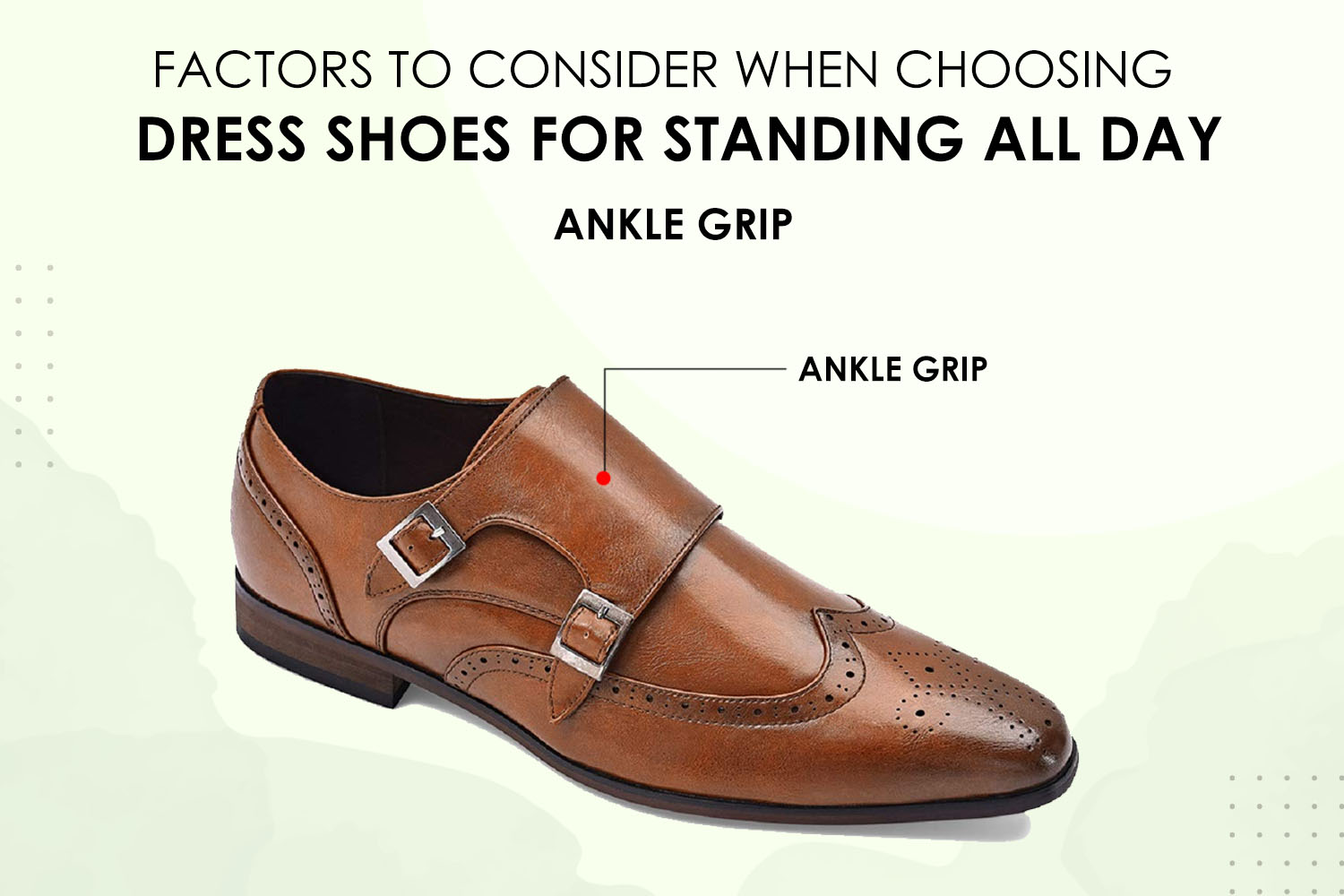
If you have narrow ankles, you might want to consider footwear with an ankle grip. This is a strap or loop around the ankle area that helps to keep the shoe in place.
Ankle grips prevent the shoe from slipping off your feet and provide additional support to the ankle area. This feature is essential for women looking for high heels, sandals, or any other type of open-toe footwear.
Outsole
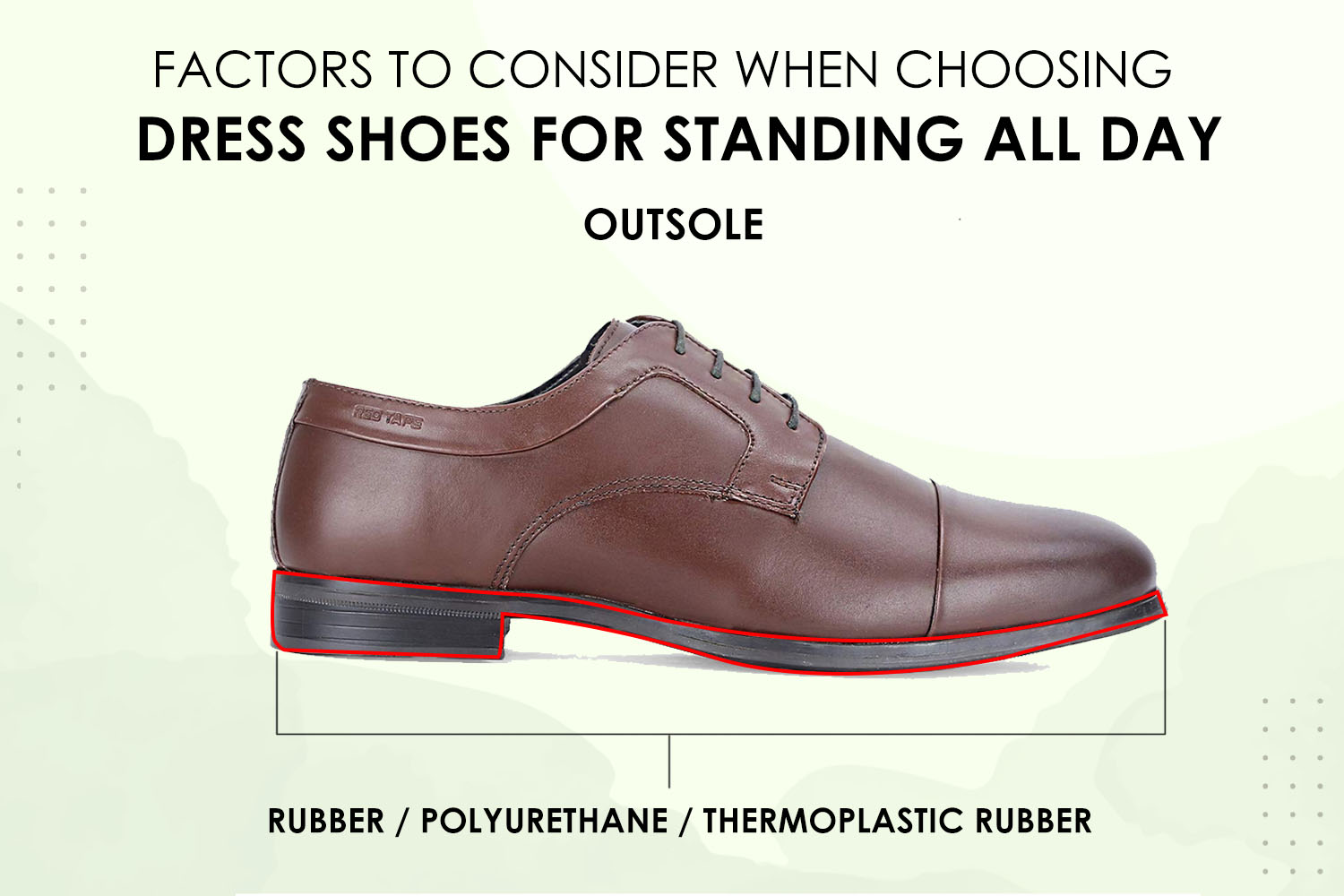
The outsole is the bottom part of the shoe that comes into contact with the ground. It’s important to choose a shoe with a durable outsole material that can withstand regular wear and tear.
Outsole material should also be slip-resistant to prevent you from slipping on wet or oily surfaces. However, if the shoe is not slip-resistant, you may make it so by following one of the methods listed in how to make shoes non-slip.
Also, check out our list of 32 best slip-resistant shoes for standing all day.
Rubber, polyurethane, and thermoplastic rubber are the most common outsole materials.
Break-in Period
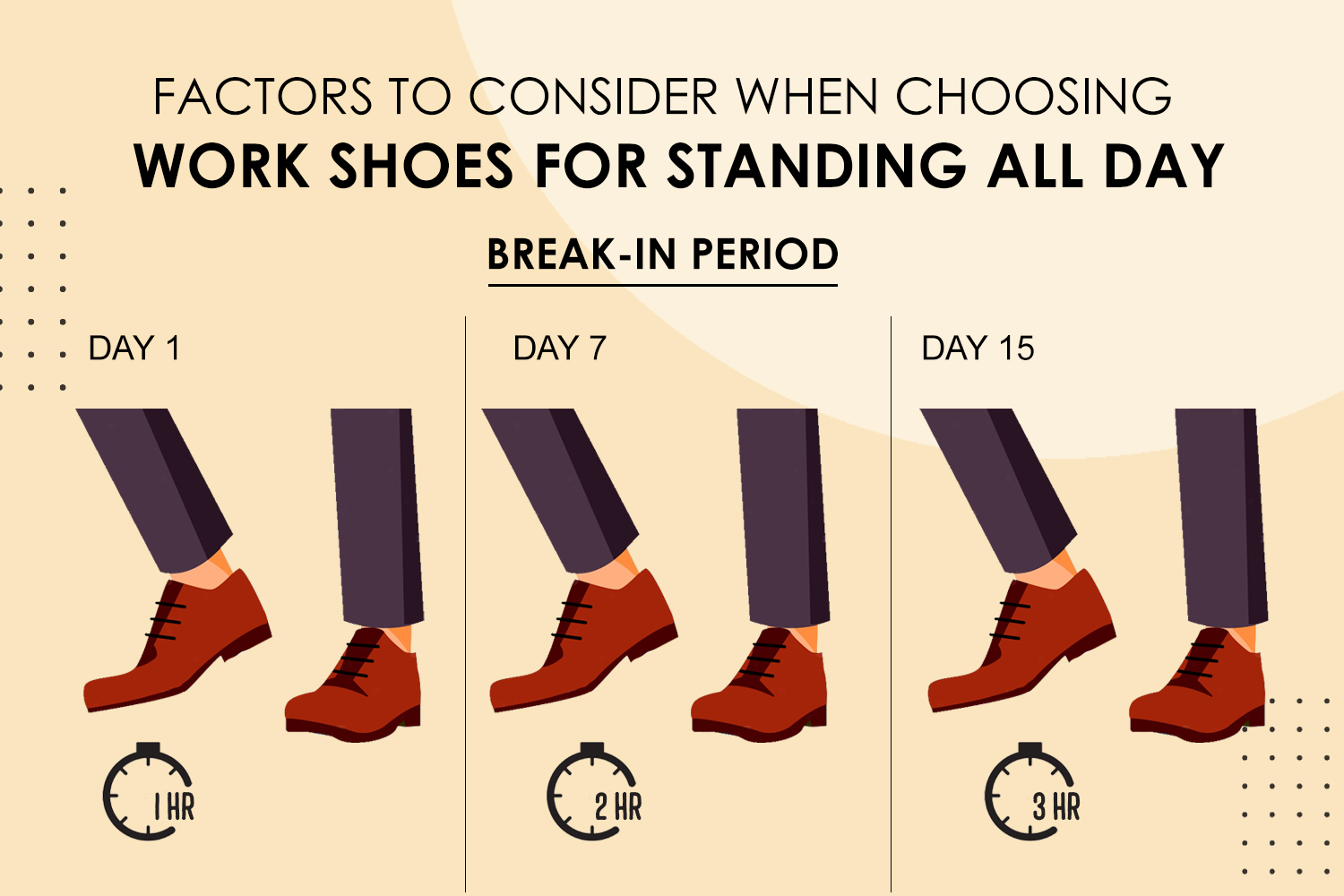
New shoes usually come with a break-in period during which they feel stiff and uncomfortable. This is because the materials need time to adjust and conform to the shape of your feet.
During the break-in period, it’s important to wear the shoes for short periods (maximum 2 hours continuously) to avoid pain and injuries.
The length of the break-in period varies depending on the shoe and its construction. To speed up the break-in process, follow our guide on how to break in shoes.
Additional Features
Depending on your needs, additional features such as water resistance, stain resistance, reflective webbing, and anti-microbial properties can also be important.
For example, if you live in a rainy climate or work in an occupation that exposes you to water or other liquids, water and stain-resistant features are a must.Are you looking for a pair of dress shoes that are comfortable and supportive enough to wear while standing all day? If so, our guide on the best dress shoes for standing all day can help.
